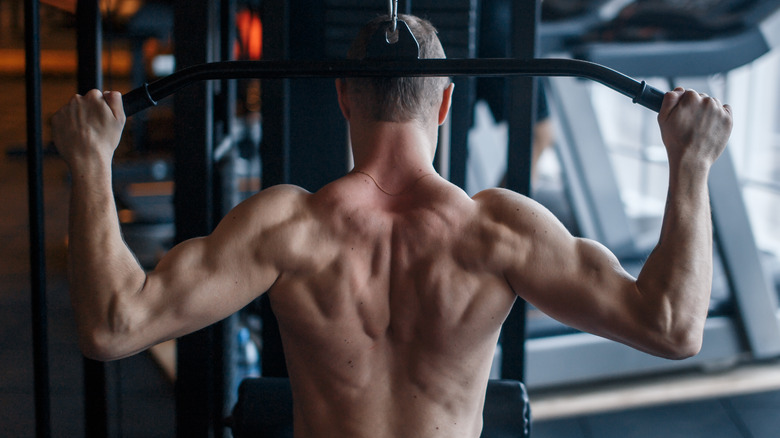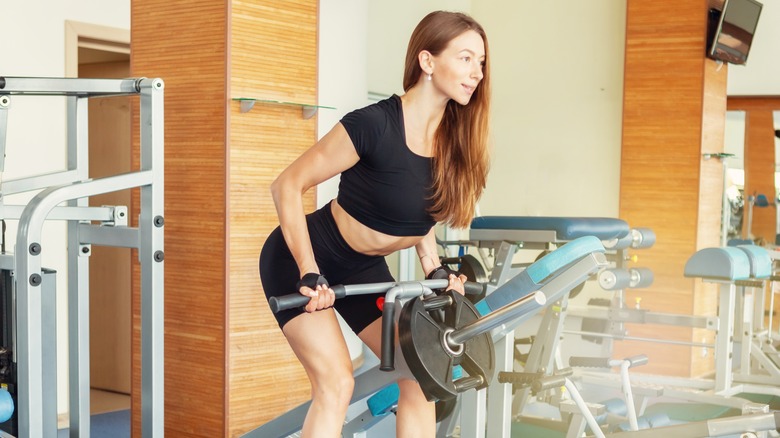Here's What You Should Do Instead Of Behind-The-Neck Lat Pulldowns
The behind-the-neck-lat pulldown is one of the most controversial exercises around — and for good reason. This compound movement engages the upper body, including the latissimus dorsi, teres major, lower traps, and other back muscles (via ExRx). Your chest and biceps will get a great workout, too. The downside is that you could end up with an injury, especially if your form is off.
This exercise requires pulling a cable bar behind your neck and then bringing it back to the starting position. Alternatively, you can use a barbell or dumbbells to keep your workouts varied. Regardless of the equipment used, behind-the-neck pulldowns place stress on the rotator cuff, a group of 4 muscles that help stabilize and move the shoulder joint. On top of that, there is a risk of hitting your neck as you move the bar and down, explains Healthline.
T-Nation, on the other hand, says that behind-the-neck pulldowns are not inherently dangerous, but they may pose risks to those with poor shoulder mobility. Lifting too much weight or using poor form can further increase injury risk. Healthline also recommends avoiding this movement if you have shoulder injuries. Luckily, there are safer alternatives available.
Best lat pulldown alternatives for a stronger back
The behind-the-neck pulldown hits nearly every muscle in the upper back, but it's not your only option. A safer choice is the front-of-the-neck pulldown, according to a 2009 study published in the Journal of Strength and Conditioning Research. This compound exercise induces levels of muscle activity, except for the trapezius muscle, which is better activated during behind-the-neck pulldowns.
If you're an intermediate or seasoned lifter, Fitness Volt suggests including pull-ups and chin-ups in your workout routine. These movements engage all the major muscle groups, including your back, chest, arms, and shoulders. Pull-ups, for example, can increase upper body strength, improve shoulder stability, and boost athletic performance (via the Strength and Conditioning Journal). Plus, you can do them from a seated position or use resistance bands for support.
Another good choice is the bent-over row, a compound movement that targets your lats, shoulders, biceps, and lower back. It also builds core strength and can make it easier to perform more complex exercises, such as the squat, bench press, and deadlift, notes Muscle and Strength. This exercise is usually performed with a barbell, but you may also use dumbbells, resistance bands, or a Smith machine. T-bar rows, renegade rows, and dumbbell pullovers can all replace the lat pulldown, per Fitness Volt. Any of these exercises can be adjusted to your fitness level. For example, you can use elastic bands instead of a barbell for T-bar rows to learn proper form.


